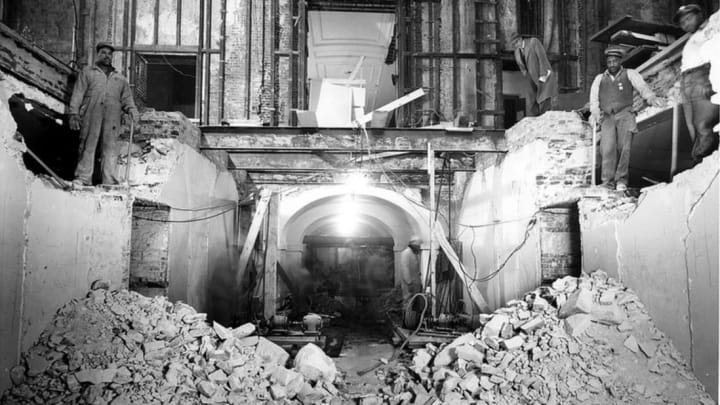The 1949 Renovation of the White House
By Jill Harness

While we will never get an accurate view of what the White House looked like when it was originally under construction in the 1800s, we can at least get a good look at the building while it was undergoing renovations in 1949.
It's easy to assume that such an important national landmark would always be well taken care of, but after it was burned by the British in 1814, and received small adaptions to incorporate indoor plumbing, electricity, and heating ducts as technology improved, the 150-year-old White House had seriously deteriorated by the time Harry Truman took office.
According to the New York Times, the building was in pretty bad shape:
"The ceiling of the East Room ... weighing seventy pounds to the square foot, was found to be sagging six inches on Oct. 26, and now is being held in place by scaffolding and supports. ...But it took the $50,000 survey authorized by Congress to disclose the fact that the marble grand staircase is in imminent danger. Supporting bricks, bought second hand in 1880, are disintegrating."
The third floor of the White House was considered a fire trap and many parts of the building were at risk of collapsing, so all social events scheduled for the 1948 holiday season were cancelled. Meanwhile, those living in the building had to deal with the building's makeshift plumbing system.
Things were so bad that Congress was discussing building an entirely new structure and destroying the existing White House. Fortunately, Truman pushed hard to have the building restored instead. “It perhaps would be more economical from a purely financial standpoint to raze the building and to rebuild completely,” he testified to Congress in February 1949. “In doing so, however, there would be destroyed a building of tremendous historical significance in the growth of the nation.”
Finally, those involved agreed to restore the building, but the process was not easy. Every piece of the interior structure, including the walls, had to be removed and put in storage while the exterior structure was reinforced with new concrete columns.
All photos from the National Archives via the Truman Library and NationalJournal.com.